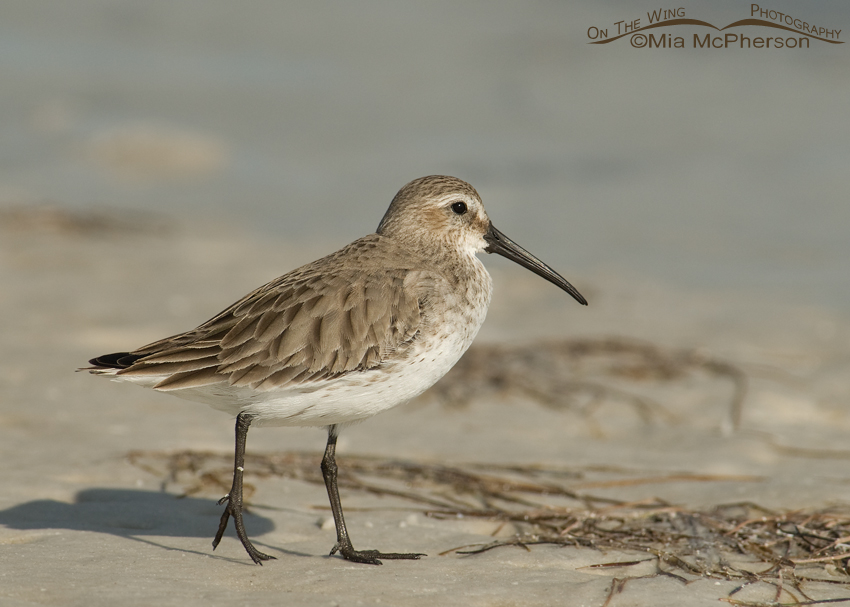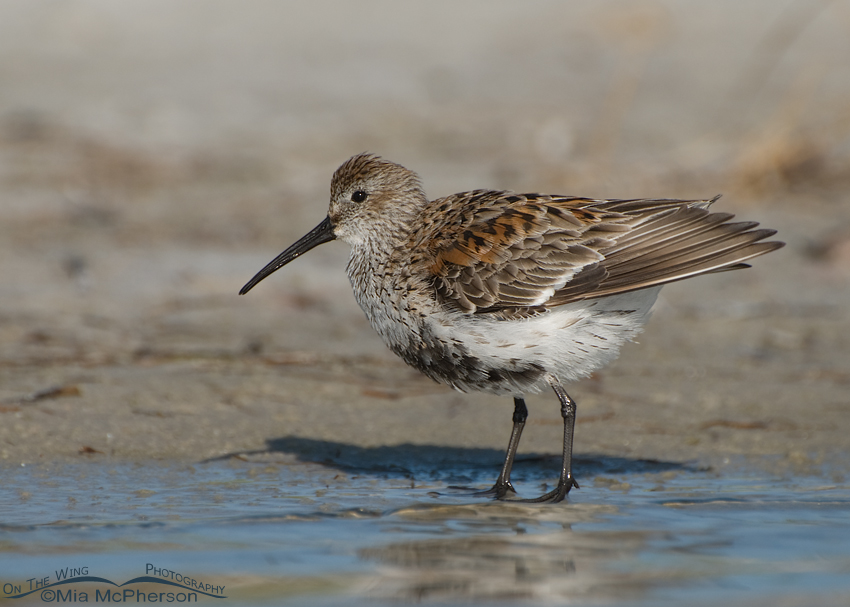 Dunlin in nonbreeding plumage – Nikon D200, handheld, f6.3, 1/1250, ISO 200, Nikkor 80-400mm VR at 400mm, natural light
Dunlin in nonbreeding plumage – Nikon D200, handheld, f6.3, 1/1250, ISO 200, Nikkor 80-400mm VR at 400mm, natural light
December 2008, Florida
Dunlins are small shorebirds that are found in North America which exhibit remarkable differences between their breeding and nonbreeding plumages. In winter Dunlins exhibit drab, gray-brown plumage and gather in large flocks on coastal mudflats and estuaries.
 Dunlin in breeding plumage – Nikon D200, handheld, f6.3, 1/800, ISO 160, Nikkor 70-300mm VR at 300mm, natural light
Dunlin in breeding plumage – Nikon D200, handheld, f6.3, 1/800, ISO 160, Nikkor 70-300mm VR at 300mm, natural light
May 2009, Florida
Dunlins in their breeding plumage are much more colorful than in the winter, they were once known as “Old Red Back” and “Red-backed Sandpiper” due to the rich chestnut colored feathers on the back. They are unmistakable during breeding season because of the red on the back and the black plumage on their bellies.
Dunlins feed by probing with their bill for clams, worms, insect larvae, crustaceans, small fish and plants. They also feed in seasonal freshwater wetlands and in flooded fields. Dunlins breed in Arctic and sub-Arctic moist tundra near ponds and prefer drier islands for nesting sites. The nest is a simple cup shape lined with lichens, leaves and grasses where they have one brood per year with around 4 eggs.
Looking at the Dunlin images above; in breeding and nonbreeding plumage, it is almost difficult to believe they are the same species.
Life is good.
Mia
Click here to view more of my Dunlin photos plus facts and information about this species.


that’s a cute bird…interesting….even the name is unfamiliar to me….great detail….
Awesone pictures, thanks
Enchanting birds. And I love that they change their garb for breeding season – as so many of us do.
Winter or spring, they are beautiful — great images Mia. Named for the color dun (middle-English) dingy brown, bark-colored, or brownish black.
I like clams. And I also like Dunlins:)
Beautiful images, Mia! You’re right. I always do a double-take when I chance upon a Dunlin in breeding plumage. Quite a different look!
Great shots of the 2 plumages side by side like that!!!
Either way, they’re very pretty!